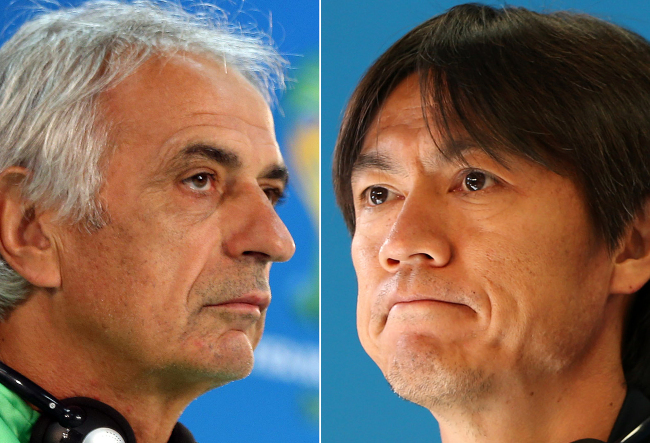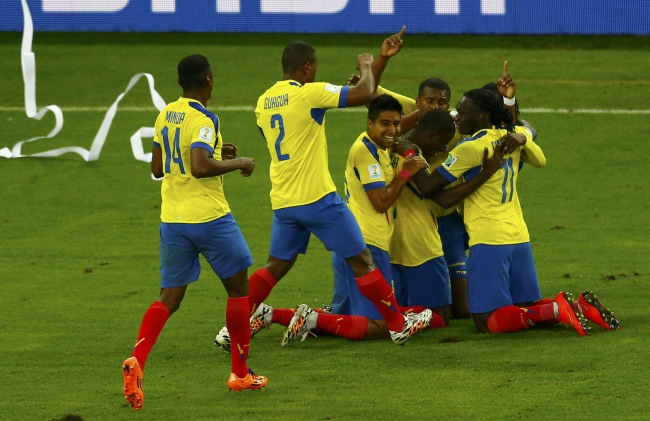Samsung Electronics will see its profit drop for the second consecutive quarter in the April-June period mostly due to slow smartphone sales, according to market analysts Friday.
They said the profit decline in the second quarter was largely attributable to the lower performance of its mobile business unit, whose operating profit accounts for more than 60 percent of the tech giant’s overall profit.
“Even though the profits of semiconductor, display and consumer electronics businesses will likely grow in the second quarter, the firm’s mobile business unit will see its profit decline due to the lackluster sales of mid-range smartphones and tablet PCs,” said Song Myung-sup, an analyst from HI Investment & Securities in his financial report.
He projected that the firm would record 7.9 trillion won ($7.8 billion), down from 9.5 trillion won in the second quarter of last year while the sales would decrease to 51 trillion won from 57 trillion won.
Investment and securities firms have recently started releasing financial reports in which they forecast the second-quarter profit of Samsung Electronics would record around 8.5 trillion won, lower than the 10 trillion won market consensus predicted earlier this year.
The disappointing sales of the Galaxy S5 smartphone are also said to have contributed to the erosion of the tech giant’s profit margin.
Hwang Min-sung, analyst from Samsung Securities, forecasted the tech giant will have shipped 77 million units of smartphones in the second quarter, lower than a previous estimate of 83 million units.
Samsung’s share in the world’s smartphone market will drop to 30 percent in the same period, down from 34 percent in the first quarter, he added.
It is, however, expected that Samsung will be able to see its profits improve in the third quarter on the back of the launch of new high-end phablet, the Galaxy Note 4, and wearable devices.
The robust chip businesses, especially the one for DRAM, will also give further impetus to Samsung to improve its quarterly sales and profits.
“The revenue of the firm will likely increase to 58.8 trillion won with an operating profit of 9.1 trillion won in the third quarter,” said Lee Jung, an analyst at Eugene Investment & Securities.
The electronics firm is slated to issue its preliminary financial statements, in which the firm unveils its sales and operating profits during the second quarter, in the second week of July.
By Kim Young-won (wone0102@heraldcorp.com)
They said the profit decline in the second quarter was largely attributable to the lower performance of its mobile business unit, whose operating profit accounts for more than 60 percent of the tech giant’s overall profit.
“Even though the profits of semiconductor, display and consumer electronics businesses will likely grow in the second quarter, the firm’s mobile business unit will see its profit decline due to the lackluster sales of mid-range smartphones and tablet PCs,” said Song Myung-sup, an analyst from HI Investment & Securities in his financial report.
He projected that the firm would record 7.9 trillion won ($7.8 billion), down from 9.5 trillion won in the second quarter of last year while the sales would decrease to 51 trillion won from 57 trillion won.
Investment and securities firms have recently started releasing financial reports in which they forecast the second-quarter profit of Samsung Electronics would record around 8.5 trillion won, lower than the 10 trillion won market consensus predicted earlier this year.
The disappointing sales of the Galaxy S5 smartphone are also said to have contributed to the erosion of the tech giant’s profit margin.
Hwang Min-sung, analyst from Samsung Securities, forecasted the tech giant will have shipped 77 million units of smartphones in the second quarter, lower than a previous estimate of 83 million units.
Samsung’s share in the world’s smartphone market will drop to 30 percent in the same period, down from 34 percent in the first quarter, he added.
It is, however, expected that Samsung will be able to see its profits improve in the third quarter on the back of the launch of new high-end phablet, the Galaxy Note 4, and wearable devices.
The robust chip businesses, especially the one for DRAM, will also give further impetus to Samsung to improve its quarterly sales and profits.
“The revenue of the firm will likely increase to 58.8 trillion won with an operating profit of 9.1 trillion won in the third quarter,” said Lee Jung, an analyst at Eugene Investment & Securities.
The electronics firm is slated to issue its preliminary financial statements, in which the firm unveils its sales and operating profits during the second quarter, in the second week of July.
By Kim Young-won (wone0102@heraldcorp.com)








